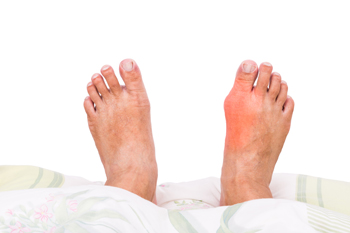The Development of a Bunion
Tuesday, 24 October 2023 00:00
Bunions, a common foot condition, can cause significant discomfort and affect daily life. Understanding the causes behind their development is important in finding effective preventive measures and treatments. Often, bunions are inherited, as a result of genetic factors influencing foot structure and mechanics. Wearing tight or ill-fitting shoes, especially those with pointed toes or high heels, can exert pressure on the toes and contribute to bunion formation. Foot stress and overuse, commonly seen in athletes or individuals with occupations that require prolonged standing, can also aggravate bunions. Additionally, medical conditions such as arthritis may increase the risk of developing bunions. Gender plays a role, with women being more susceptible due to wearing footwear that cramps the toes. Recognizing these causes empowers individuals to make informed choices regarding footwear and foot care. If you have a bunion, it is suggested that you are under the care of a podiatrist who can help you to manage this condition, and offer potential relief options.
If you are suffering from bunion pain, contact one of our podiatrists of North Bay Ankle & Foot Center. Our doctors can provide the care you need to keep you pain-free and on your feet.
What Is a Bunion?
Bunions are painful bony bumps that usually develop on the inside of the foot at the joint of the big toe. As the deformity increases over time, it may become painful to walk and wear shoes. Women are more likely to exacerbate existing bunions since they often wear tight, narrow shoes that shift their toes together. Bunion pain can be relieved by wearing wider shoes with enough room for the toes.
Causes
- Genetics – some people inherit feet that are more prone to bunion development
- Inflammatory Conditions - rheumatoid arthritis and polio may cause bunion development
Symptoms
- Redness and inflammation
- Pain and tenderness
- Callus or corns on the bump
- Restricted motion in the big toe
In order to diagnose your bunion, your podiatrist may ask about your medical history, symptoms, and general health. Your doctor might also order an x-ray to take a closer look at your feet. Nonsurgical treatment options include orthotics, padding, icing, changes in footwear, and medication. If nonsurgical treatments don’t alleviate your bunion pain, surgery may be necessary.
If you have any questions, please feel free to contact our offices located in Petaluma and Sonoma, CA . We offer the newest diagnostic and treatment technologies for all your foot care needs.






